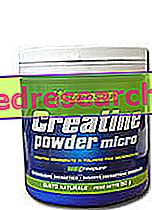For the world health organization osteoporosis: is a systemic disease with multifactorial etiopathogenesis, is determined by a pathological progressive reduction of bone mass and by micro-architectural alterations of bone tissue, which becomes fragile and more exposed to the risk of fracture.
Purpose of motor activity in subjects suffering from osteoporosis

Create a dynamic mechanical stimulation, sufficient to obtain an improvement in bone mineralization.
The most recent literature recognizes that the muscular force transmitted through the tendons to the bone during contraction is the best possible stimulus (isotonic exercises with natural or light weights and elastic resistance are suitable).
To plan the physical activity in order to keep the bone "healthy", it is first of all necessary to respect five principles:
1) Specificity
The bone adaptation to mechanical stresses is mainly local, so it is advisable to specifically train the skeletal regions to be reinforced.
The activity is effective on the deposition of bone matrix in relation to the insertion point of the muscle that is working.
In particular:
Reinforce the femur in the proximal portion: perform exercises that involve the hip (press, squat, step, walk).
Strengthen the lumbar vertebrae: perform resistive extension exercises against the spine.
Strengthen the wrist: perform exercises with the upper limbs.
Reinforce the hip: perform exercises that involve the buttocks for the great trochanter; exercises involving the iliopsoas for small trochanter; exercises that involve adductors and extensors of the hip for Ward's triangle of the femoral neck
2) Overload
The positive effects on the bone matrix can be seen if the mechanical load is progressively increased, which must however be greater than a minimum effective threshold. It must however be considered that an excess of stresses produces a bone with less biomechanical resistance.
3) Starting values
The greatest development of bone mass is seen in subjects starting from a lower bone mass.
It should be borne in mind that bone tissue adapts to changes in stress in different ways depending on age. Physical exercise is more osteogenic (it stimulates more bone reinforcement) during growth compared to mature age. As a result, pre and adolescent exercises can reduce the risk of fracture in senescence.
4) Reduction of positive effects
With the approach of reaching the maximum bone density, greater physical efforts are needed to be able to increase it further
5) Reversibility
The positive osteogenic effect linked to physical activity is extinguished if physical activity is suspended.
Primary objectives of physical activity for the prevention of osteoporosis
Increased bone mass
Dynamic mechanical stimulation
Use of district loads
Improved aerobic capacity
Muscular strengthening
Use of gravity
Secondary objectives of physical activity for the prevention of osteoporosis
Prevention of fractures
Balance improvement
Improved coordination
Increase of soft tissue tropism (reduction of the traumatic effect on the bone)
Postural education and ergonomics
Seven different principles that regulate motor activity can be considered so that this has beneficial effects on the skeletal system
1st Principle
For bone to have a positive adaptive response it requires dynamic rather than static mechanical stimulations.
The dynamic activity besides producing intermittent osteogenic stresses on the bone, increases the rhythmic secretion of anabolic hormones that favor the adaptive response of the bone itself.
2nd Principle
In order for the bone to have a positive adaptive response, an exercise that has an intensity higher than normal stresses is required. Mechanical stimulation must overcome a certain tension force, genetically predetermined, to become osteogenic.
3rd Principle
The osteogenic response (bone mineralization) is proportional to the frequency of the mechanical stimulus.
The stimulation threshold for maintaining bone structure is the product between the frequency of the exercise and its intensity. The bone is "maintained" both with less frequent high-intensity mechanical stimulations, and with more frequent stimulations at a lower intensity.
4th Principle
The adaptive bone response is greater if 2 short exercise sessions are proposed, spaced out throughout the day. In fact, the bone requires a minimum of 6-8 hours of rest to respond optimally to a dynamic load that exceeds the threshold.
5th Principle
The adaptive bone response requires a particular loading mode; the forces that strike it must vary in orientation and intensity with respect to those that normally act on the bone.
6th Principle
The adaptive response of the bone requires an abundant supply of energy nutrients. Inadequate availability would have negative effects on hormones with anabolic action on the bone.
7th Principle
In order for the bone to have a positive adaptive response to exercise, it needs an abundant supply of calcium and cholecalciferol. This principle is particularly important before puberty and after menopause.



